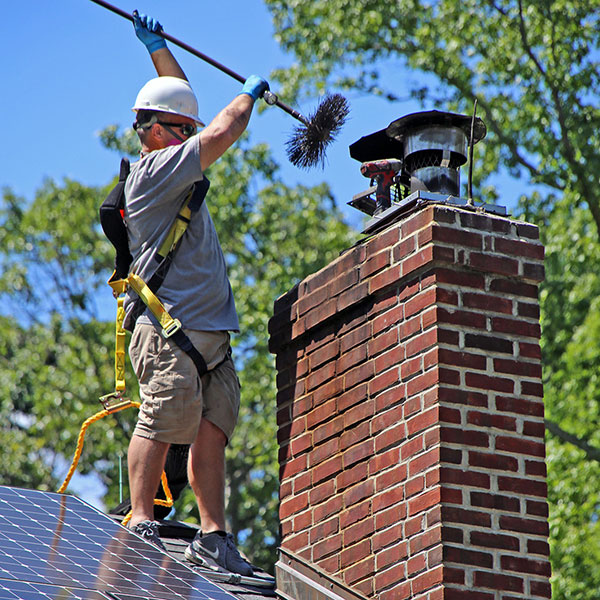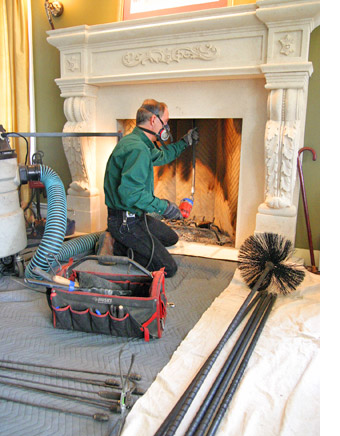Leading san jose chimney repair Providers to stop Architectural Damages
How to Determine Typical Issues That Require Chimney Repair in your house
Recognizing usual issues that demand chimney repair work in your home is critical for keeping both safety and security and effectiveness. Routine inspections can expose substantial indicators such as creosote accumulation, visible cracks, and indicators of moisture intrusion. What are the certain actions one can take to guarantee their chimney remains in optimum condition?

Signs of Creosote Build-up
One of one of the most essential signs of chimney concerns is the build-up of creosote, a byproduct of timber burning. This substance forms when smoke cools and condenses on the walls of the smokeshaft, leading to a thick, tar-like deposit. In time, creosote accumulation can pose significant safety threats, including an enhanced danger of chimney fires.
Property owners need to be cautious in observing indicators of creosote accumulation. One main indicator is the existence of a strong, pungent smell originating from the chimney or fire place, particularly during cooler months when the fireplace is in use. san jose chimney repair. Furthermore, dark, glossy deposits on the chimney flue or in the firebox may signify excessive creosote build-up
Regular evaluations can assist recognize the level of the trouble. It is recommended that a professional chimney sweeper conducts an annual assessment to assess creosote degrees and execute needed cleanings. If house owners discover any modifications in the performance of their fire place, such as decreased draft or problem in beginning a fire, it might show a creosote issue. Dealing with these indicators quickly is necessary to keeping a risk-free and reliable chimney system.
Visible Cracks and Damages

Noticeable fractures and damages in a chimney can act as substantial caution indications of underlying structural concerns that might need immediate interest. These blemishes can emerge from different elements, consisting of temperature level changes, working out of the home, and wear and tear of materials gradually. It is critical to evaluate both the exterior and interior of the smokeshaft for any kind of indications of fracturing, spalling, or crumbling stonework.
Hairline cracks might indicate small settling, while bigger cracks might signify a much more serious structural concession. House owners should likewise be aware of any type of leaning or turning of the chimney, as this can posture safety dangers and indicate foundational concerns.
Regular assessments by a qualified expert can recognize these visible indications early, protecting against much more substantial repair work down the line. If you see any fractures or damages, it is suggested to speak with a smokeshaft expert who can examine the circumstance and advise proper repair service alternatives (san jose chimney repair). Overlooking visible cracks can cause raised prices and possible threats in the future, underscoring the significance of prompt treatment
Water Leakages and Dampness
Recognizing water leakages and dampness breach in a chimney is important for preserving the stability of both the smokeshaft framework discover this info here and the home. Water infiltration can cause substantial damages with time, consisting of architectural damage, mold and mildew development, and endangered safety and security. Among one of the most typical signs of wetness problems is the existence of efflorescence, which looks like white, grainy down payments on the chimney's exterior. This happens when water evaporates, leaving behind mineral salts.
Furthermore, house owners must examine for signs of water stains on indoor wall surfaces or ceilings near the chimney, as these may show leakages. Routine examination of blinking, the material that seals the smokeshaft to the roofing, is important. Damaged or poorly mounted flashing can allow water to seep right into the smokeshaft structure.
During hefty rainfall or snowmelt, take notice of merging water near the chimney base or on the roof covering. This can symbolize incorrect drainage or clogs that need to be dealt with. Routine maintenance and timely repair services are vital in preventing moisture-related problems, ensuring the smokeshaft remains practical and secure for use.
Unpleasant Odors

One more prospective source of odor is animal invasion. Birds, raccoons, or other wildlife may nest in the chimney, resulting in the decay of organic materials, which generates foul smells. In such cases, it is essential to deal with the problem quickly to guarantee both the security and comfort of your household.
Additionally, stationary air in a chimney can contribute to moldy odors, frequently indicating an absence of correct air flow. Preserving sufficient airflow is essential to prevent these concerns and make certain the reliable operation have a peek here of your chimney system.
Routine assessments and cleansing by a specialist can help recognize and correct these odor-related problems, safeguarding your home from future complications.
Poor Draft and Smoke Issues
A relentless bad draft in a chimney can significantly prevent the efficient procedure of a fireplace or timber oven, resulting in smoke-related issues that endanger indoor air quality. This problem frequently results in smoke rippling back into the living room, producing pain and prospective health dangers for residents.
Numerous aspects can add to inadequate draft issues. Clogs brought on by creosote buildup, particles, or animal nests can stop proper air movement, forcing smoke to turn around instructions. Additionally, an incorrectly sized flue or smokeshaft can impair air flow, making it difficult published here for smoke to get away successfully.
Climate condition, such as strong winds or low air pressure, can likewise impact smokeshaft efficiency, aggravating draft issues. Property owners may observe signs like too much smoke, sticking around smells, or trouble beginning fires.
It is critical to address these problems promptly, as prolonged direct exposure to smoke can lead to respiratory concerns and various other wellness problems. Normal chimney evaluations and maintenance are important to determine and correct poor draft problems. Consulting a specialist smokeshaft sweep can guarantee extensive cleaning and evaluation, restoring optimum capability to your chimney system and enhancing the safety of your home.
Verdict
In summary, normal evaluation of smokeshafts is important for recognizing common problems that demand repair work. Resolving these issues proactively can boost the safety and effectiveness of the smokeshaft system, eventually protecting against much more extreme damages and guaranteeing optimum performance.